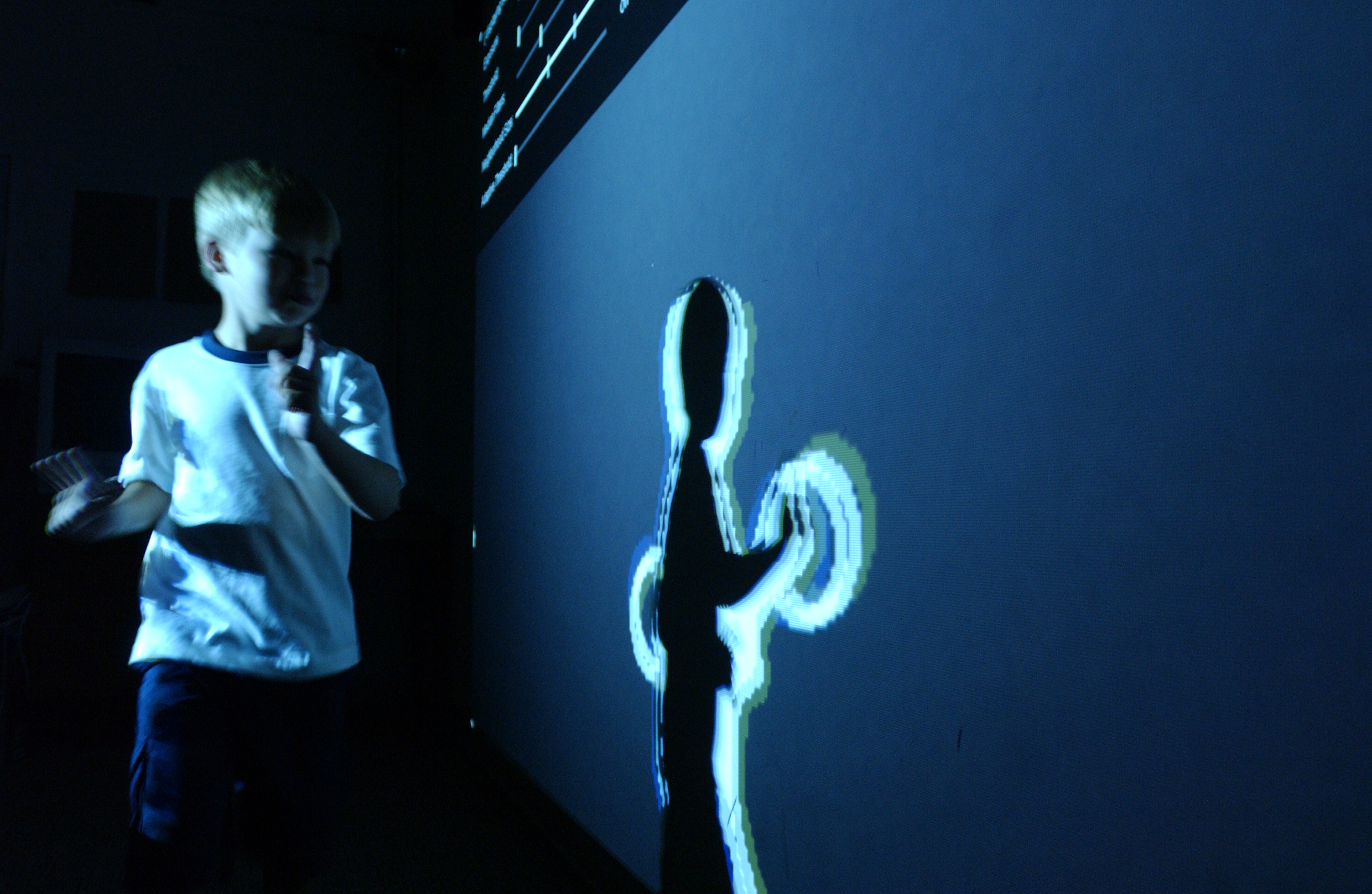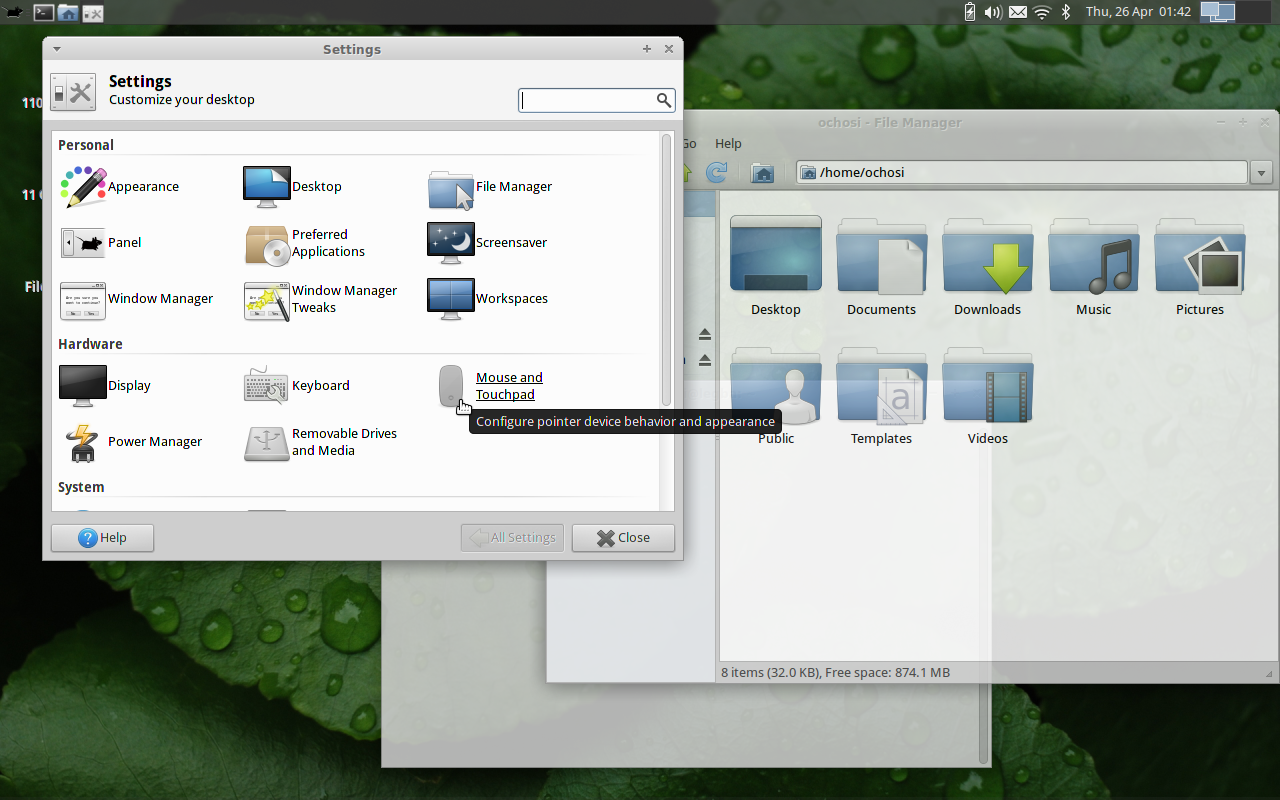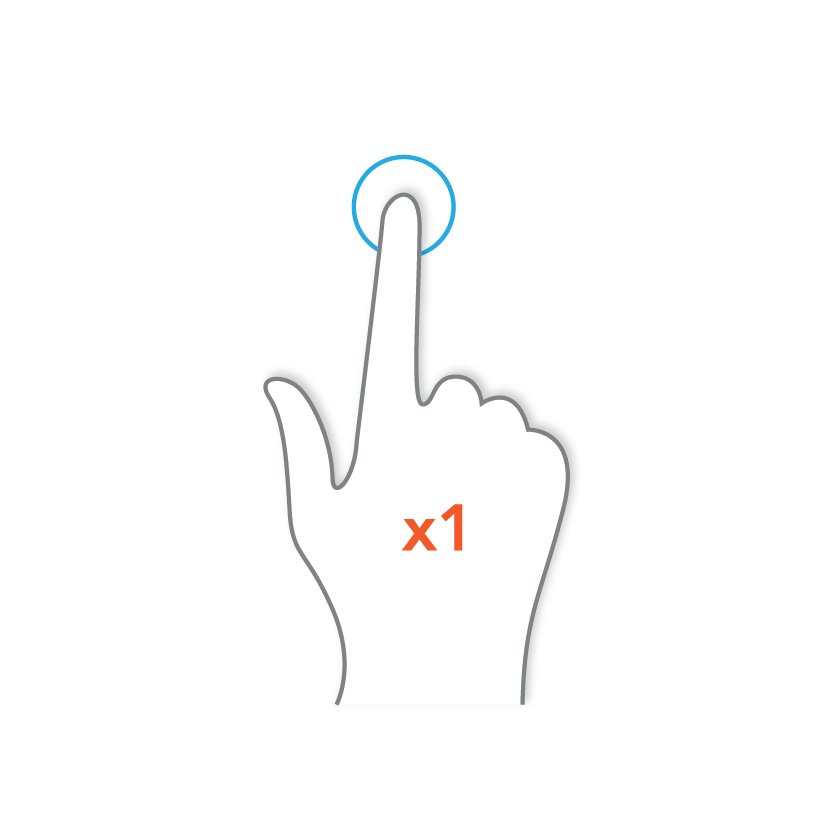|
Gesture Recognition
Gesture recognition is an area of research and development in computer science and language technology concerned with the recognition and interpretation of human gestures. A subdiscipline of computer vision, it employs mathematical algorithms to interpret gestures. Gesture recognition offers a path for computers to begin to better understand and interpret computer processing of body language, human body language, previously not possible through text user interface, text or unenhanced graphical user interfaces (GUIs). Gestures can originate from any bodily motion or state, but commonly originate from the face or hand. One area of the field is emotion recognition derived from facial expressions and hand gestures. Users can make simple gestures to control or interact with devices without physically touching them. Many approaches have been made using cameras and computer vision algorithms to interpret sign language, however, the identification and recognition of posture, gait, pro ... [...More Info...] [...Related Items...] OR: [Wikipedia] [Google] [Baidu] |
Image Processing
An image or picture is a visual representation. An image can be two-dimensional, such as a drawing, painting, or photograph, or three-dimensional, such as a carving or sculpture. Images may be displayed through other media, including a projection on a surface, activation of electronic signals, or digital displays; they can also be reproduced through mechanical means, such as photography, printmaking, or photocopying. Images can also be animated through digital or physical processes. In the context of signal processing, an image is a distributed amplitude of color(s). In optics, the term ''image'' (or ''optical image'') refers specifically to the reproduction of an object formed by light waves coming from the object. A ''volatile image'' exists or is perceived only for a short period. This may be a reflection of an object by a mirror, a projection of a camera obscura, or a scene displayed on a cathode-ray tube. A ''fixed image'', also called a hard copy, is one that ... [...More Info...] [...Related Items...] OR: [Wikipedia] [Google] [Baidu] |
Time-of-flight Camera
A time-of-flight camera (ToF camera), also known as time-of-flight sensor (ToF sensor), is a range imaging camera system for measuring distances between the camera and the subject for each point of the image based on time-of-flight, the round trip time of an artificial light signal, as provided by a laser or an LED. Laser-based time-of-flight cameras are part of a broader class of scannerless LIDAR, in which the entire scene is captured with each laser pulse, as opposed to point-by-point with a laser beam such as in scanning LIDAR systems. Time-of-flight camera products for civil applications began to emerge around 2000, as the semiconductor processes allowed the production of components fast enough for such devices. The systems cover ranges of a few centimeters up to several kilometers. Types of devices Several different technologies for time-of-flight cameras have been developed. RF-modulated light sources with phase detectors Photonic Mixer Devices (PMD), the Swiss Ranger, ... [...More Info...] [...Related Items...] OR: [Wikipedia] [Google] [Baidu] |
Structured Light
upright=1.3, A structured light pattern projected onto a surface (left) Structured light is a method that measures the shape and depth of a three-dimensional object by projecting a pattern of light onto the object's surface. The pattern can be either stripes, grids, or dots. The resulting distortions of the projected pattern reveals the object's solid geometry through triangulation, enabling the creation of a 3D model of the object. The scanning process relies on coding techniques for accurately detailed measurement. The most widely used coding techniques are binary, Gray, and phase-shifting, each offering distinct advantages and drawbacks. Structured light technology is applied across diverse fields, including industrial quality control, where it is used for precision inspection and dimensional analysis, and cultural heritage preservation, where it assists in the documentation and restoration of archaeological artifacts. In medical imaging, it facilitates non-invasive dia ... [...More Info...] [...Related Items...] OR: [Wikipedia] [Google] [Baidu] |
Wired Glove
A wired glove (also called a dataglove or cyberglove) is an input device for human–computer interaction worn like a glove. Various sensor technologies are used to capture physical data such as bending of fingers. Often a motion tracker, such as a magnetic tracking device or inertial tracking device, is attached to capture the global position/rotation data of the glove. These movements are then interpreted by the software that accompanies the glove, so any one movement can mean any number of things. Gestures can then be categorized into useful information, such as to recognize sign language or other symbolic functions. Expensive high-end wired gloves can also provide haptic feedback, which is a simulation of the sense of touch. This allows a wired glove to also be used as an output device. Traditionally, wired gloves have only been available at a huge cost, with the finger bend sensors and the tracking device having to be bought separately. Wired gloves are often used in vir ... [...More Info...] [...Related Items...] OR: [Wikipedia] [Google] [Baidu] |
Kinect
Kinect is a discontinued line of motion sensing input devices produced by Microsoft and first released in 2010. The devices generally contain RGB color model, RGB cameras, and Thermographic camera, infrared projectors and detectors that map depth through either structured light or time of flight calculations, which can in turn be used to perform real-time gesture recognition and body skeletal detection, among other capabilities. They also contain microphones that can be used for speech recognition and voice control. Kinect was originally developed as a motion controller peripheral for Xbox Video game console, video game consoles, distinguished from competitors (such as Nintendo's Wii Remote and Sony's PlayStation Move) by not requiring physical controllers. The first-generation Kinect was based on technology from Israeli company PrimeSense, and unveiled at E3 2009 as a peripheral for Xbox 360 codenamed "Project Natal". It was first released on November 4, 2010, and would go on t ... [...More Info...] [...Related Items...] OR: [Wikipedia] [Google] [Baidu] |
Tangible User Interface
A tangible user interface (TUI) is a user interface in which a person interacts with digital information through the physical environment. The initial name was Graspable User Interface, which is no longer used. The purpose of TUI development is to empower collaboration, learning, and design by giving physical forms to digital information, thus taking advantage of the human ability to grasp and manipulate physical objects and materials. This was first conceived by Radia Perlman as a new programming language that would teach much younger children similar to Logo, but using special "keyboards" and input devices. Another pioneer in tangible user interfaces is Hiroshi Ishii, a professor at the MIT who heads the Tangible Media Group at the MIT Media Lab. His particular vision for tangible UIs, called ''Tangible Bits'', is to give physical form to digital information, making bits directly manipulable and perceptible. Tangible bits pursues the seamless coupling between physical obje ... [...More Info...] [...Related Items...] OR: [Wikipedia] [Google] [Baidu] |
User Interfaces
In the industrial design field of human–computer interaction, a user interface (UI) is the space where interactions between humans and machines occur. The goal of this interaction is to allow effective operation and control of the machine from the human end, while the machine simultaneously feeds back information that aids the operators' decision-making process. Examples of this broad concept of user interfaces include the interactive aspects of computer operating systems, hand tools, heavy machinery operator controls and process controls. The design considerations applicable when creating user interfaces are related to, or involve such disciplines as, ergonomics and psychology. Generally, the goal of user interface design is to produce a user interface that makes it easy, efficient, and enjoyable (user-friendly) to operate a machine in the way which produces the desired result (i.e. maximum usability). This generally means that the operator needs to provide minimal input to ... [...More Info...] [...Related Items...] OR: [Wikipedia] [Google] [Baidu] |
COVID-19
Coronavirus disease 2019 (COVID-19) is a contagious disease caused by the coronavirus SARS-CoV-2. In January 2020, the disease spread worldwide, resulting in the COVID-19 pandemic. The symptoms of COVID‑19 can vary but often include fever, fatigue, cough, breathing difficulties, anosmia, loss of smell, and ageusia, loss of taste. Symptoms may begin one to fourteen days incubation period, after exposure to the virus. At least a third of people who are infected asymptomatic, do not develop noticeable symptoms. Of those who develop symptoms noticeable enough to be classified as patients, most (81%) develop mild to moderate symptoms (up to mild pneumonia), while 14% develop severe symptoms (dyspnea, hypoxia (medical), hypoxia, or more than 50% lung involvement on imaging), and 5% develop critical symptoms (respiratory failure, shock (circulatory), shock, or organ dysfunction, multiorgan dysfunction). Older people have a higher risk of developing severe symptoms. Some complicati ... [...More Info...] [...Related Items...] OR: [Wikipedia] [Google] [Baidu] |
Context Menu
A context menu (also called contextual, shortcut, and pop up or pop-up menu) is a menu in a graphical user interface (GUI) that appears upon user interaction, such as a right-click mouse operation. A context menu offers a limited set of choices that are available in the current state, or context, of the operating system or application to which the menu belongs. Usually the available choices are actions related to the selected object. From a technical point of view, such a context menu is a graphical control element. History Context menus first appeared in the Smalltalk environment on the Xerox Alto computer, where they were called ''pop-up menus''; they were invented by Dan Ingalls in the mid-1970s. Microsoft Office v3.0 introduced the context menu for copy and paste functionality in 1990. Borland demonstrated extensive use of the context menu in 1991 at the Second Paradox Conference in Phoenix Arizona. Lotus 1-2-3/G for OS/2 v1.0 added additional formatting options in ... [...More Info...] [...Related Items...] OR: [Wikipedia] [Google] [Baidu] |
Pen Computing
Pen computing refers to any computer user-interface using a digital pen or Stylus (computing), stylus and Graphics tablet, tablet, over input devices such as a keyboard or a mouse. Historically, pen computing (defined as a computer system employing a user-interface using a pointing device plus handwriting recognition as the primary means for interactive user input) predates the use of a mouse and graphical display by at least two decades, starting with the Stylator and RAND Tablet systems of the 1950s and early 1960s. General techniques User interfaces for pen computing can be implemented in several ways. Current systems generally employ a combination of these techniques. Pointing/locator input The tablet and Stylus (computing), stylus are used as pointing devices, such as to replace a mouse. While a mouse is a ''relative'' pointing device (one uses the mouse to "push the cursor around" on a screen), a tablet is an ''absolute'' pointing device (one places the stylus where th ... [...More Info...] [...Related Items...] OR: [Wikipedia] [Google] [Baidu] |
Mouse Gesture
In computing, a pointing device gesture or mouse gesture (or simply gesture) is a way of combining pointing device or finger movements and clicks that the software recognizes as a specific computer event and responds to accordingly. They can be useful for people who have difficulties typing on a keyboard. For example, in a web browser, a user can navigate to the previously viewed page by pressing the right pointing device button, moving the pointing device briefly to the left, then releasing the button. History The first pointing device gesture, the " drag", was introduced by Apple to replace a dedicated "move" button on mice shipped with its Macintosh and Lisa computers. Dragging involves holding down a pointing device button while moving the pointing device; the software interprets this as an action distinct from separate clicking and moving behaviors. Unlike most pointing device gestures, it does not involve the tracing of any particular shape. Although the "drag" behavior ... [...More Info...] [...Related Items...] OR: [Wikipedia] [Google] [Baidu] |









